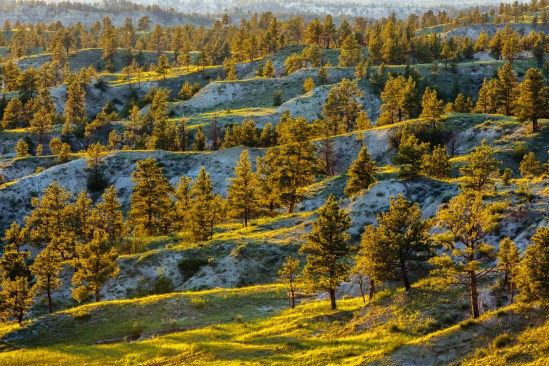The TRCP’s scouting report on sportsmen’s issues in Congress
The Senate and House are both in session this week after a seven-week recess.

With nineteen legislative days left to negotiate a spending bill, congressional leaders continue to disagree on how to keep the government funded when the new fiscal year begins on October 1. As the clock ticks, some prefer to pass a short-term spending bill through the end of 2016, which would theoretically allow time in December to craft an omnibus funding agreement for the rest of 2017. Others prefer a continuing resolution, which would extend the enacted funding levels from the current fiscal year into the first few months of 2017, allowing the new president and the new congress to address funding for the remainder of fiscal year 2017. This is the only thing Congress must do in the coming weeks, with a particularly abbreviated work period.
Sage grouse are still mixed up in the “The National Defense Authorization Act” (NDAA). While the NDAA is must-pass legislation, conference talks have slowed due to disagreements about the bill. As you may remember, the House NDAA included Congressman Rob Bishop’s (R-Utah) “The Greater Sage Grouse Protection and Recovery Act,” which would bring state and federal agencies’ efforts to coordinate on sage-grouse conservation to a grinding halt. Thankfully, the Senate version of the NDAA does not include similar provisions.
In other sage grouse news, last week the Bureau of Land Management released the final seven instruction memorandums for the greater sage-grouse conservation plans, responding to local concerns about grazing and drilling. While federal and state agencies will continue implementing these collaborative plans, their future may be in the hands of lawmakers.
For the first time in nine years, lawmakers will meet to discuss a first comprehensive energy bill. Earlier this year, a package of high-priority legislation with habitat and conservation funding impacts was added to “The Energy Policy Modernization Act” (S. 2012) by Chairwoman Lisa Murkowski (R-Alaska). These provisions included the permanent reauthorization of “The Federal Land Transaction Facilitation Act,” the reauthorization of the “North American Wetlands Conservation Act” through 2020, and the establishment of “The National Fish Habitat Conservation Act” program. The package passed with a vote of 97-0, an overwhelming victory for the sportsmen-conservation community. On Thursday, the Senate Energy and Natural Resources Committee will hear conferees’ concerns with the Senate energy bill, including the habitat and conservation package, but Chairwoman Murkowski is optimistic about continuing to negotiate with conferees and finally passing the bill.
An amendment to address Louisiana flooding and habitat connectivity may come to the Senate floor before the end of the year. Senate Environment and Public Works Chairman Jim Inhofe (R-Okla.) and ranking member Barbara Boxer (D-Calif.) introduced an amendment to “The Water Resource Development Act” (WRDA) that would require the Army Corps of Engineers to implement flood-control projects in Baton Rouge, Louisiana, after devastating floods damaged area homes, as well as fish and wildlife habitat. Ultimately, projects would restore and mitigate habitat connectivity.
The overall bill would provide $9 billion in funds for water resource projects. It does not include the language on natural infrastructure provisions that sportsmen were hoping to see in the final bill, which passed the committee with a 19-1 vote earlier this year, but a motion to add those provisions is expected when WRDA reaches the Senate floor—most likely after a spending bill and the NDAA have been passed.
But there is even more work to do. Lawmakers are also faced with discussion of a bill that would set aside $1.1 billion to combat the Zika virus, and a mark-up of “The Resilient Federal Forests Act,” (H.R. 2647), which would offer a wildfire funding fix and provide forest management provisions, has been set for next week.
What else we’re tracking:
Wednesday, September 7, 2016
The Federal Power Act will be discussed at a House Energy and Commerce Subcommittee hearing.
Four energy and natural resources bills, including Congressman Ryan Zinke’s (R-Mont.) “Certainity for States and Tribes Act,” will be the subject of a House Natural Resources Committee mark-up.
Thursday, September 8, 2016
Discussions will continue on natural resources bills in the House Natural Resources Committee mark-up.




















